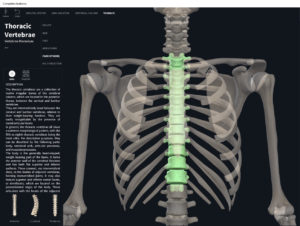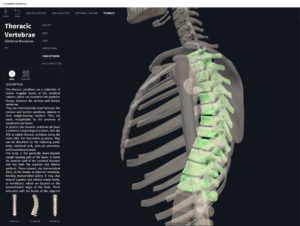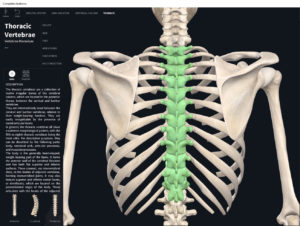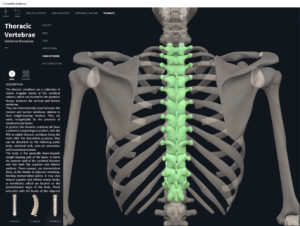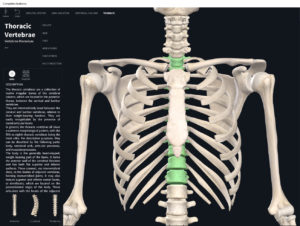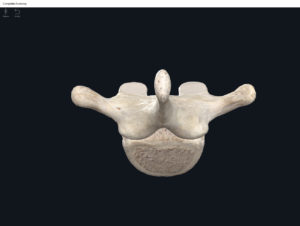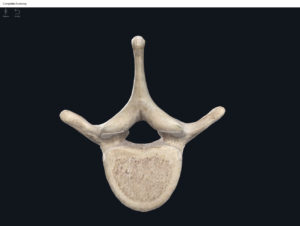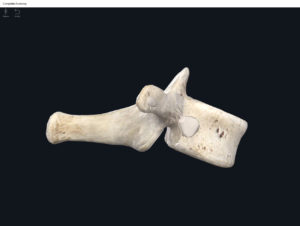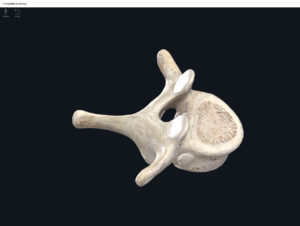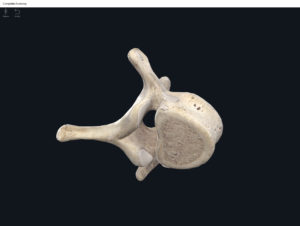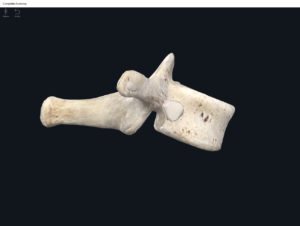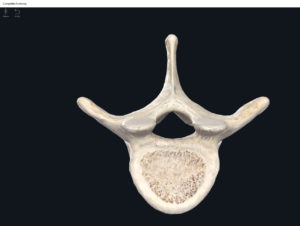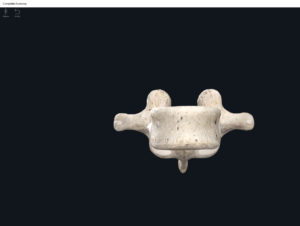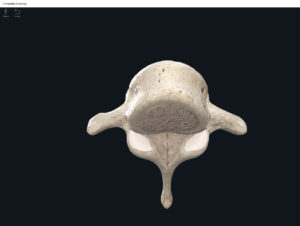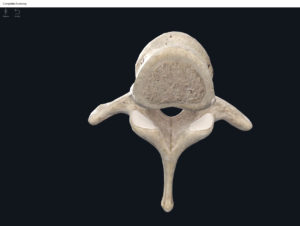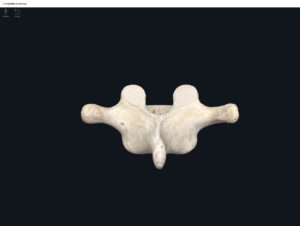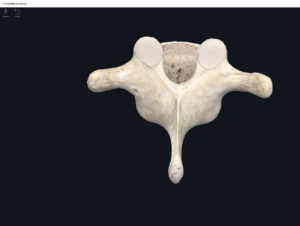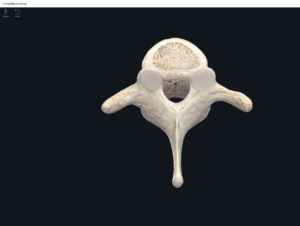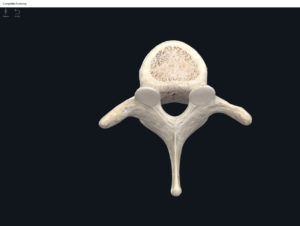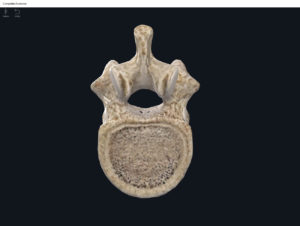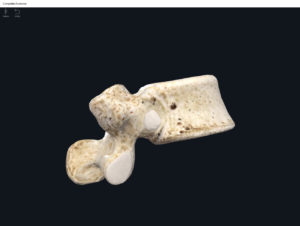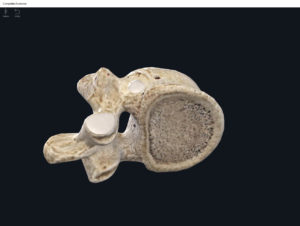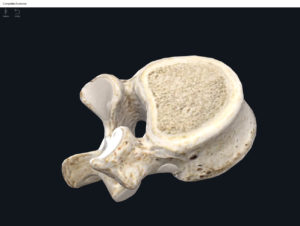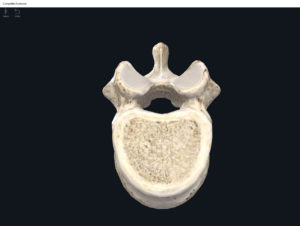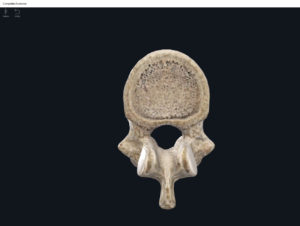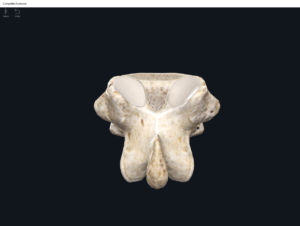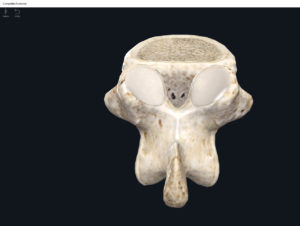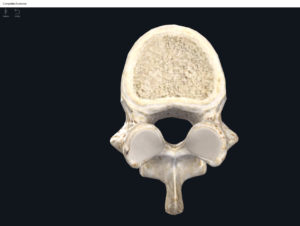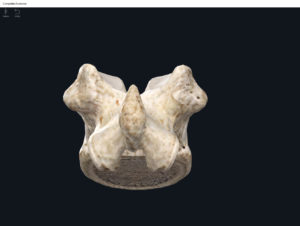Anatomy & Physiology: Bones—Vertebral Column, Thoracic Region.
Structure.
- The thoracic vertebrae are larger and stronger than the cervical vertebrae.
- One foramina: vertebral.
- The spinous processes are long and pointing posterior and inferiorly (downward and back). As compared to the spinous processes of the lumbar region, the thoracic spinous processes resemble the head of a giraffe.
- The spinous processes of T11 and T12 are “transitional” (into the lumbar vertebrae) in that they are shorter and directed less inferiorly (pointing less downward).
- Thoracic vertebrae have longer transverse processes as compared to cervical vertebrae.
- The thoracic vertebrae articulate with the ribs.
- The body of the thoracic vertebrae have facets/demifacets that articulate with the heads of the ribs.
- The transverse processes have facets to articulate with the tubercles of ribs.
- Superior facets: posterolateral.
- Inferior facets: anteromedial.
Function.
Clinical Significance.
References
Biel, A. (2015). Trail guide to the body: A hands-on guide to locating muscles, bones and more.
Cedars-Sinai. (2018). Vertebrae of the spine. Retrieved from https://www.cedars-sinai.org/health-library/diseases-and-conditions/v/vertebrae-of-the-spine.html
Jenkins, G., & Tortora, G. J. (2012). Anatomy and Physiology: From Science to Life, 3rd Edition International Stu. John Wiley & Sons.
Muscolino, J. E. (2017). The muscular system manual: The skeletal muscles of the human body.
